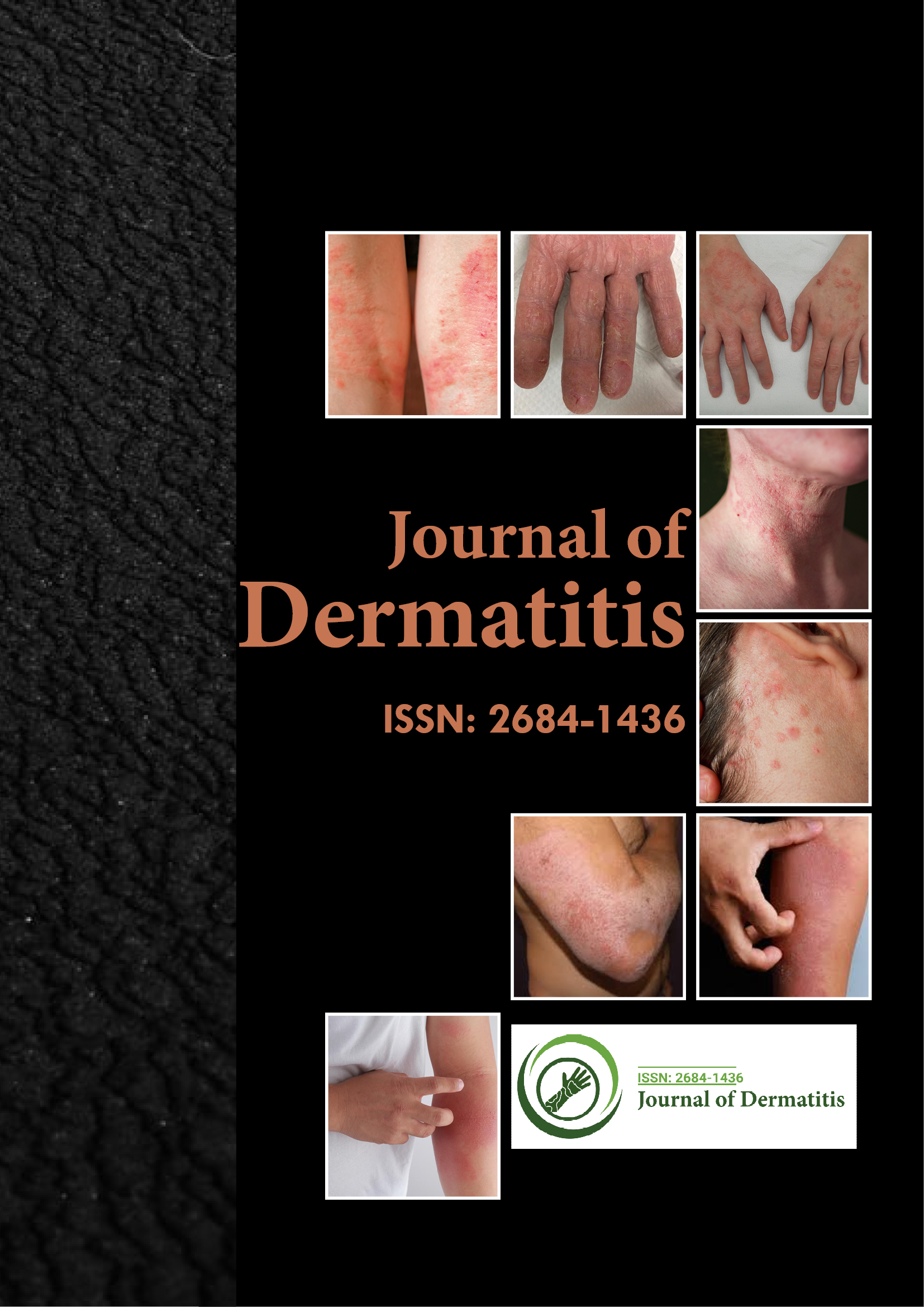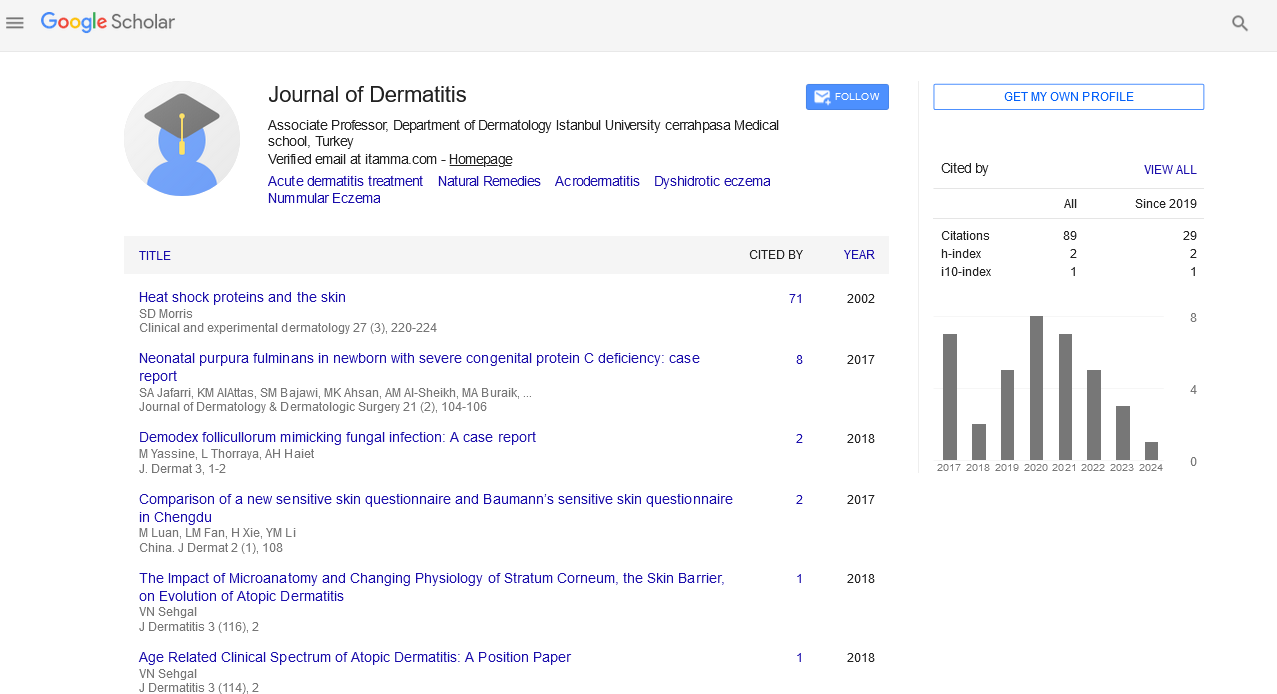Indexed In
- RefSeek
- Hamdard University
- EBSCO A-Z
- Euro Pub
- Google Scholar
Useful Links
Share This Page
Journal Flyer

Open Access Journals
- Agri and Aquaculture
- Biochemistry
- Bioinformatics & Systems Biology
- Business & Management
- Chemistry
- Clinical Sciences
- Engineering
- Food & Nutrition
- General Science
- Genetics & Molecular Biology
- Immunology & Microbiology
- Medical Sciences
- Neuroscience & Psychology
- Nursing & Health Care
- Pharmaceutical Sciences
Perspective - (2023) Volume 8, Issue 4
Examination of the Pathological Process and Mechanisms Underlying Acne
Kimberley Thornley*Received: 19-Jul-2023, Manuscript No. JOD-23-22369; Editor assigned: 21-Jul-2023, Pre QC No. JOD-23-22369 (PQ); Reviewed: 07-Aug-2023, QC No. JOD-23-22369; Revised: 14-Aug-2023, Manuscript No. JOD-23-22369 (R); Published: 21-Aug-2023, DOI: 10.35248/2684-1436.23.8.208
Description
Acne, a common skin disorder that affects millions of individuals worldwide, is a multifactorial condition primarily characterized by the formation of pimples, blackheads, and whiteheads. Understanding the intricate mechanism behind acne development is essential for devising effective treatments and prevention strategies. The pathogenesis of acne involves the convergence of several interrelated factors, including sebum production, follicular hyperkeratinization, bacterial colonization, and inflammation.
Sebum production plays a pivotal role in acne development. Sebaceous glands, located beneath the skin's surface, produce sebum, an oily substance that lubricates and protects the skin. Hormones, such as androgens, stimulate sebum production, making it an important factor in the onset of acne, especially during puberty. When there is an excessive production of sebum, it can mix with dead skin cells, leading to the formation of plugs within hair follicles.
Follicular hyperkeratinization is another key contributor to acne. Normally, skin cells shed and are replaced in a controlled manner. However, in acne-prone individuals, there is an abnormal accumulation of dead skin cells around the hair follicles. This process, called hyperkeratinization, contributes to the formation of comedones, or clogged pores, which can be open (blackheads) or closed (whiteheads).
Bacterial colonization is an important factor in the progression of acne. Propionibacterium acnes, a bacterium naturally present on the skin, thrive in the oxygen-deprived environment within clogged pores. As sebum and dead skin cells accumulate, it creates a favorable environment for the proliferation of these bacteria. In response to the bacteria's presence, the body's immune system triggers an inflammatory response, leading to redness and swelling in the affected areas.
Inflammation is a critical component of acne pathogenesis. When P. acnes proliferates within clogged pores, it induces an immune response, attracting white blood cells to the site of infection. This immune reaction releases inflammatory mediators, such as cytokines and chemokines, which cause the redness and discomfort commonly associated with acne. In severe cases, the inflammatory response can lead to the formation of painful nodules and cysts.
Moreover, there are various external factors that can exacerbate acne or worsen existing conditions. These factors may include exposure to environmental pollutants, certain medications, and the use of comedogenic (pore-clogging) skincare products. Additionally, diet and lifestyle choices, such as consuming highglycemic foods and leading a sedentary lifestyle, have been linked to acne development through their impact on hormone levels and inflammatory responses.
Understanding the mechanism of acne has led to the development of various treatment options. Topical treatments containing ingredients like benzoyl peroxide, salicylic acid, and retinoids are commonly used to unclog pores, reduce inflammation, and combat bacterial growth. For more severe cases, oral medications, such as antibiotics and hormonal therapies, may be prescribed. Isotretinoin, a potent oral retinoid, is considered the last resort for severe, treatment-resistant acne due to its potential side effects.
In conclusion, acne is a complex skin disorder with a multifactorial mechanism involving sebum production, follicular hyperkeratinization, bacterial colonization, and inflammation. An imbalance in any of these factors can contribute to the development and persistence of acne lesions. Successful management of acne requires a comprehensive approach, including proper skincare, dietary modifications, and, when necessary, medical intervention. As ongoing research continues to unveil new insights into acne pathogenesis, advancements in treatment options offer hope for individuals seeking clearer, healthier skin.
Citation: Thornley K (2023) Examination of the Pathological Process and Mechanisms Underlying Acne. J Dermatitis. 8:208.
Copyright: © 2023 Thornley K. This is an open-access article distributed under the terms of the Creative Commons Attribution License, which permits unrestricted use, distribution, and reproduction in any medium, provided the original author and source are credited.

